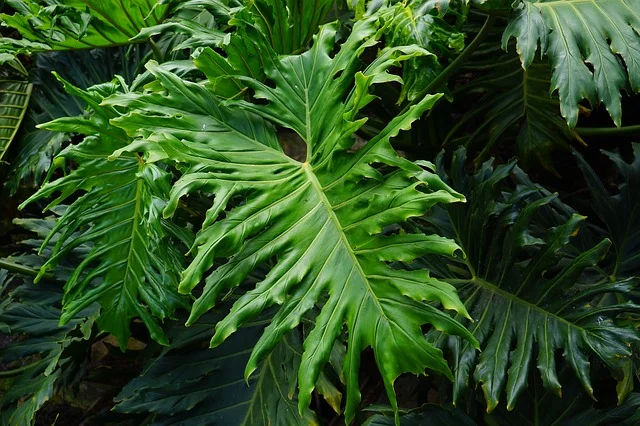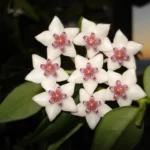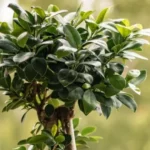Table of Contents
Caring for Philodendron Bipinnatifidum
Unlike most philodendrons, Philodendron bipinnatifidum looks distinctly tree-like. In fact, one of its common names is Tree Philodendron.
It’s also referred to as Split Leaf Philodendron because of the structure of the leaves, as well as Horsehead Philodendron.
It does, however, still have the trademark heart-shaped leaves philodendrons are named for. It’s just a little harder to spot with the addition of the distinct splits in the leaves.
In very warm areas, the Philodendron bipinnatifidum can be grown outdoors. In cooler climates, it should still be in a pot even if it’s outside. This way, it can be brought indoors for winter so it doesn’t get too cold.
Some people keep Philodendron bipinnatifidum indoors all year long. It can still thrive this way, and it needs a lot more space than some houseplants, but it won’t grow to the 15′ tall tree-like shrub it becomes in its native regions.
Indoors, the Philodendron bipinnatifidum does not generally flower, whereas outdoors, given the right climate and many years to achieve maturity, it can flower.
Helping Philodendron Bipinnatifidum Thrive
In the right conditions, individual leaves of the Philodendron bipinnatifidum can grow over two feet long. Indoors, it’s not likely to be quite so big, but for most people, that’s a good thing; a 15′ tall “tree” with 2′ to 3′ leaves doesn’t fit comfortably in many homes.
Like most tropical plants, Philodendron bipinnatifidum appreciates both warmth and humidity.
Since it grows taller than most of its relatives, it can withstand a bit more direct light than many other philodendrons.
It’s not particularly prone to any diseases or pests, so as long as you can provide it with the right temperature, humidity, and space, it’s a pretty easy plant to keep alive.
Light Requirements
Philodendron bipinnatifidum likes direct sun for 2-6 hours per day. Otherwise, it should be in the shade or in otherwise diffuse bright light. Morning sun and afternoon shade is best.
Keep in mind that this can vary some by region. For example, in hot deserts, you may want to avoid direct sunlight altogether and stick to bright, indirect light as you would with a smaller philodendron.
Keep an eye on your plant, and lessen its sun if the leaves start scorching or drying out despite adequate water.
Temperature Requirements
Like most tropical plants, Philodendron bipinnatifidum likes temperatures to stay above 60 degrees Fahrenheit. 60 to 75 degrees works well for it indoors, though its growth will be a little slower than if it’s given warmer temperatures and plenty of humidity.
It does better with higher temperatures than it does lower ones.
Soil Requirements
Philodendron bipinnatifidum doesn’t do well in acidic or salty soil. It’s best to use an alkaline soil mix. Often recommended is a combination of compost, perlite and gravel, and orchid bark.
The soil should be well-aerated and well-draining. If planting Philodendron bipinnatifidum in a pot, make sure the pot allows for good drainage.
Browning or burning around the edges of the leaves can indicate too much acidity or mineral buildup in the soil.
Humidity Requirements
Philodendron bipinnatifidum likes its environment very humid, preferably 70-80% humidity.
If you live in a place with average humidity, improvised humidifiers such as plates of water can increase the ambient humidity enough for this plant.
If you live in a dry climate, consider investing in a proper humidifier.
How to Water Philodendron Bipinnatifidum
Water Philodendron bipinnatifidum when the top of its soil is starting to dry. While, as with most plants, it shouldn’t be presented with soil that stays too wet and leads to root rot, it does like soil to stay moist.
Making sure you have it in the right soil combination can help with this.
Browning or burning around the edges of the leaves can indicate too much acidity or mineral buildup.
To help prevent this, in addition to choosing the right soil for planting or potting, it’s also good to use filtered water or rainwater, rather than standard tap water.
How to Fertilize Philodendron Bipinnatifidum
Because fertilizer tends to add salt, which Philodendron bipinnatifidum doesn’t handle well, use caution when fertilizing.
Dilute the fertilizer by at least half and fertilize no more than once a month. Consider an organic fertilizer or one made specifically for tropical plants.
Pruning Philodendron Bipinnatifidum
Pruning of Philodendron bipinnatifidum is primarily for controlling its size. If you’d like to propagate the plant with the cuttings from pruning, make sure you cut below leaf nodes.
Propagation of Philodendron Bipinnatifidum
The best way to propagate Philodendron bipinnatifidum is via cuttings. Be sure to cut below a leaf node.
Unlike with smaller plants, it’s not advisable to start these cuttings in water. Instead, go ahead and plant the cutting in moist soil, keeping the leaves above ground.
Give it extra care for at least a couple weeks, when it should properly begin taking root.
Extra Tips For Philodendron Bipinnatifidum Care
Pests and Diseases
Philodendron bipinnatifidum isn’t particularly prone to any pests or diseases. As with most houseplants, avoid letting the roots sit in water or overly wet soil, since root rot can be near impossible to treat.
Ridding Philodendron Bipinnatifidum of Pests
Philodendron bipinnatifidum does sometimes get pests, but it isn’t terribly common in most areas. Keep an eye out for bugs, webs, and white patches.
If you see any signs of scales, spiders mites, or aphids, you’ll want to treat the plant to remove the infestation, then check or preemptively treat nearby plants.
Pests generally take shelter underneath leaves, and that’s the easiest place to spot them. You can manually remove and wash any infested sites with a damp cloth.
Then, consider applying neem oil or another gentle or natural pesticide to prevent reinfestation.
Toxicity
Philodendron bipinnatifidum is toxic to pets and should not be consumed or chewed. It can irritate skin for some people, so consider wearing gloves when handling.
Quick Reference
- Light: Bright sun and shade
- Temperature: 60 degrees Fahrenheit or higher in winter, 70 degrees or higher in summer
- Soil: Compost, perlite/gravel, and orchid bark
- Humidity: High
- Water: Water when soil starts drying; keep moist, not wet
- Pruning: As needed for size or aesthetics or propagation
Image by Hans Braxmeier from Pixabay


